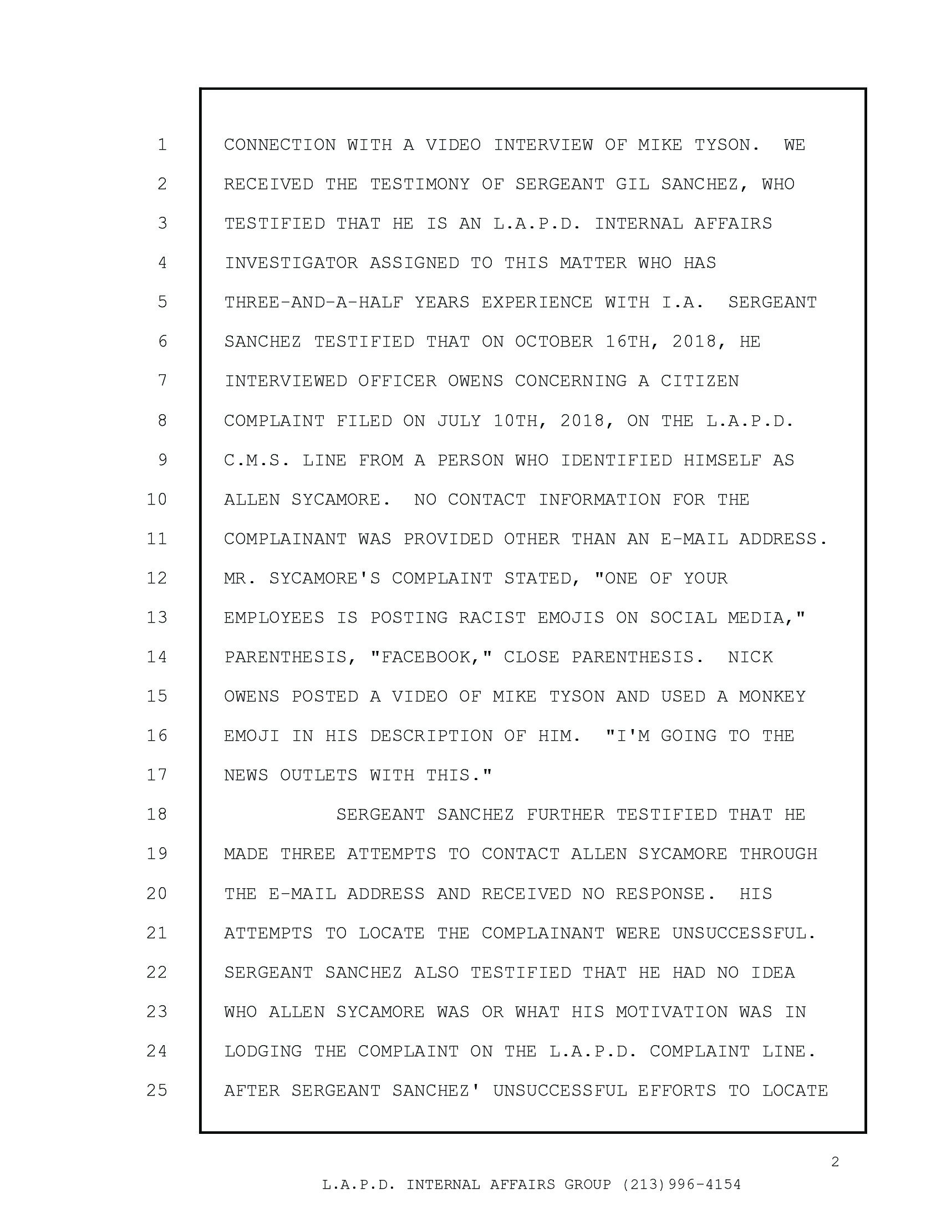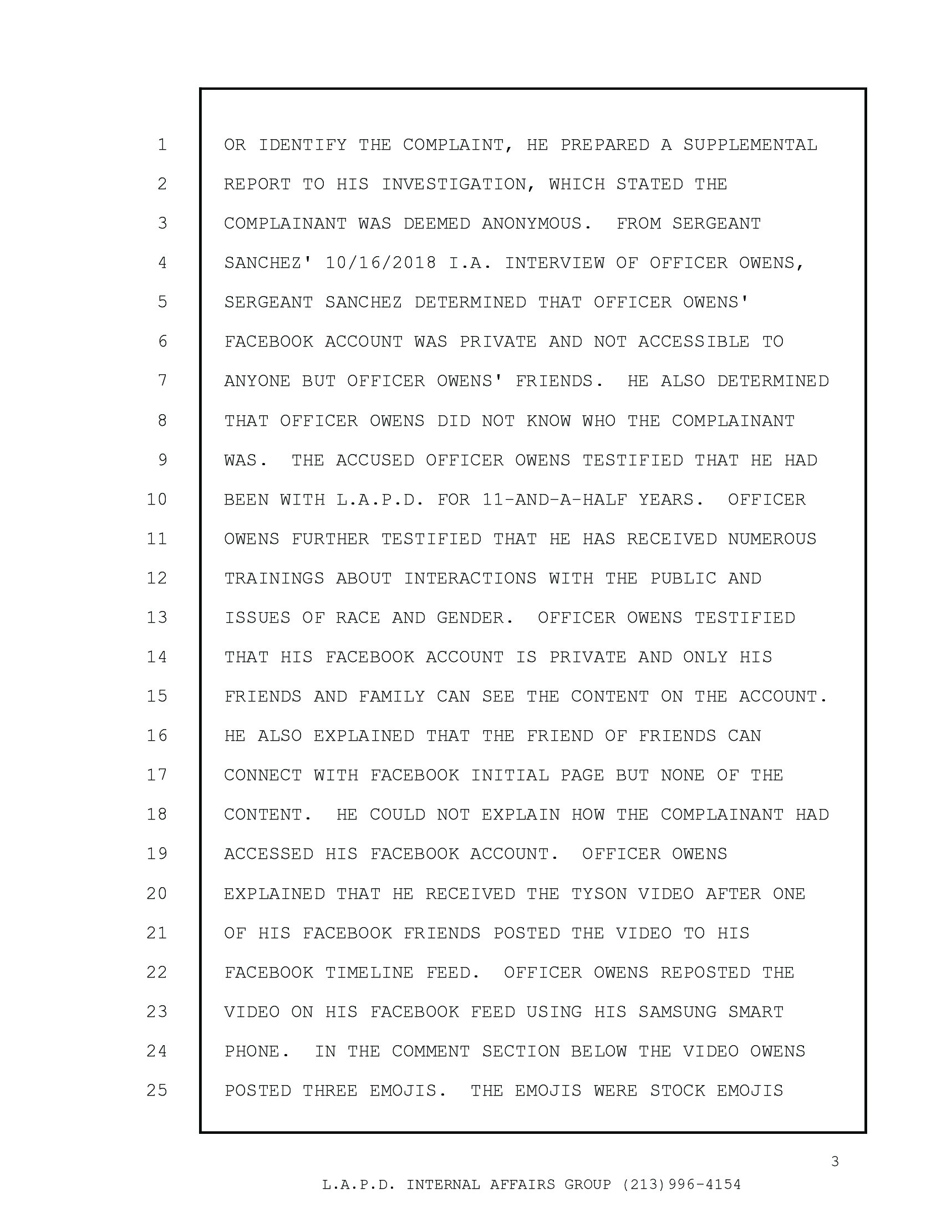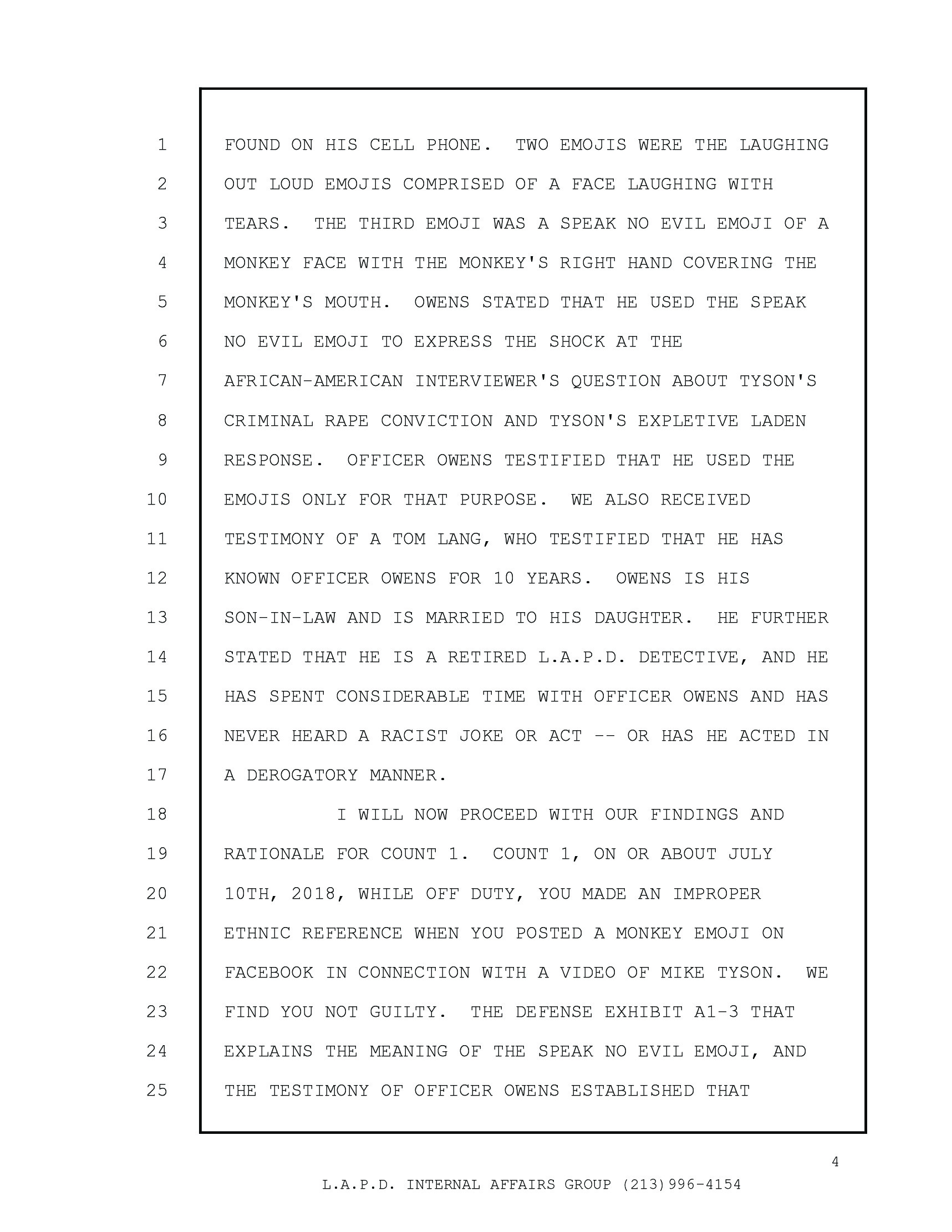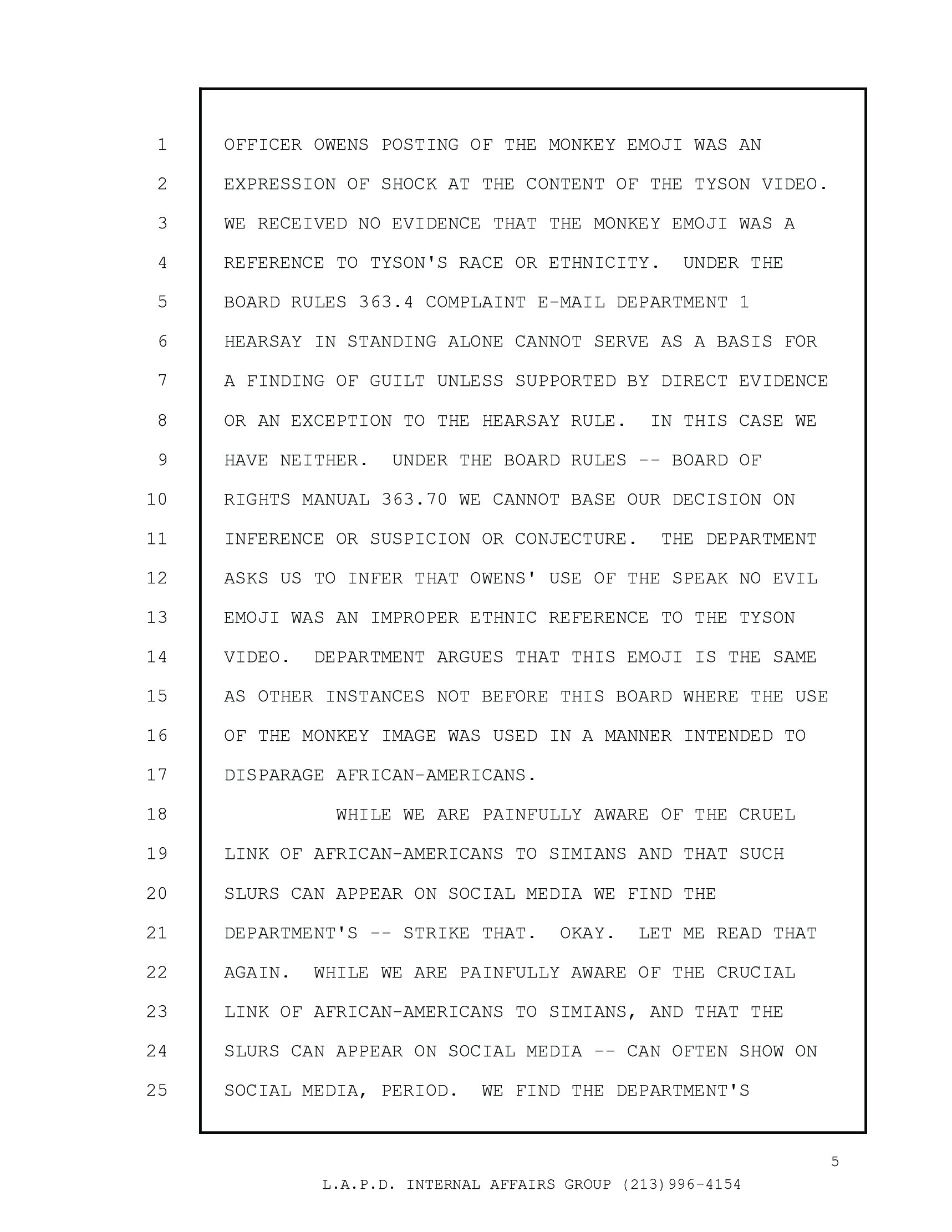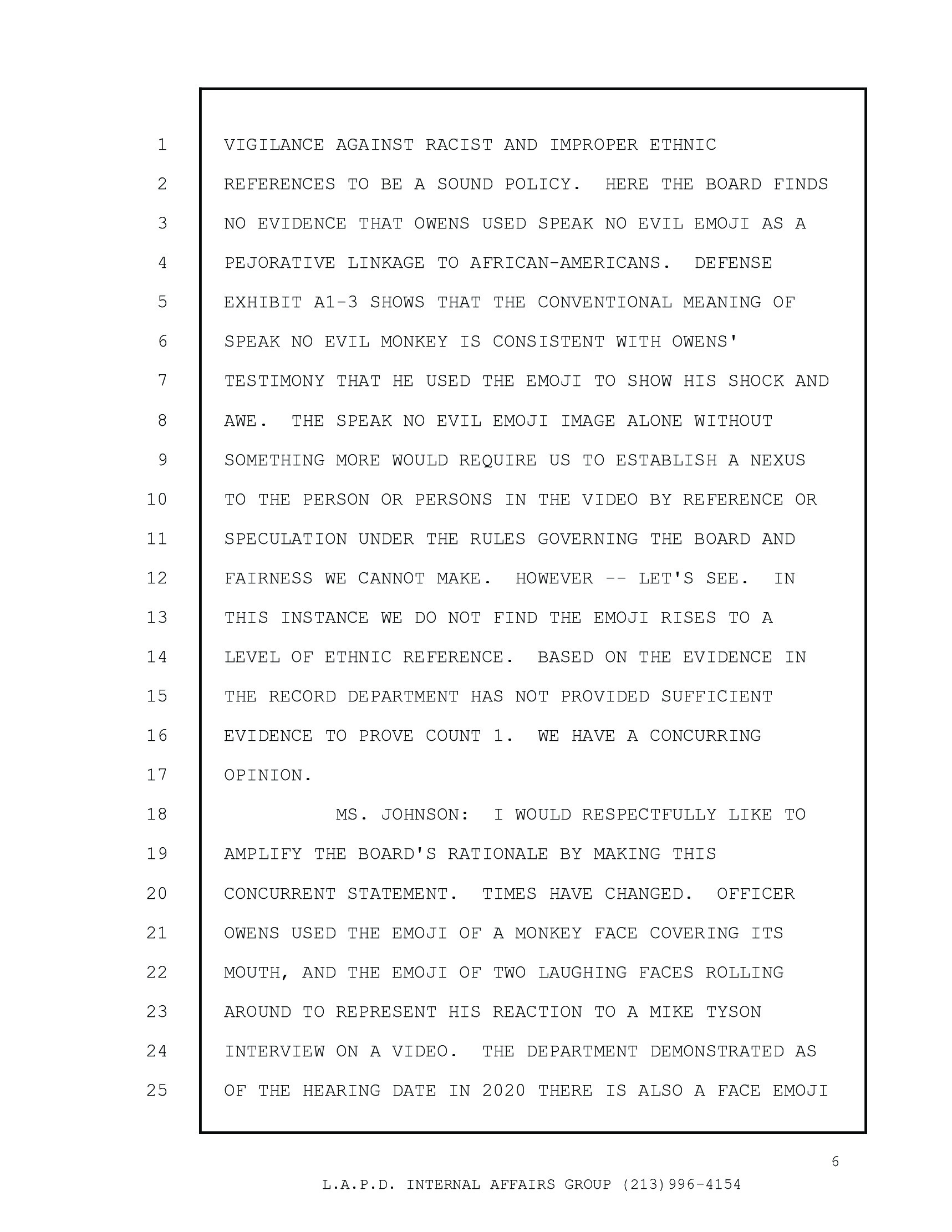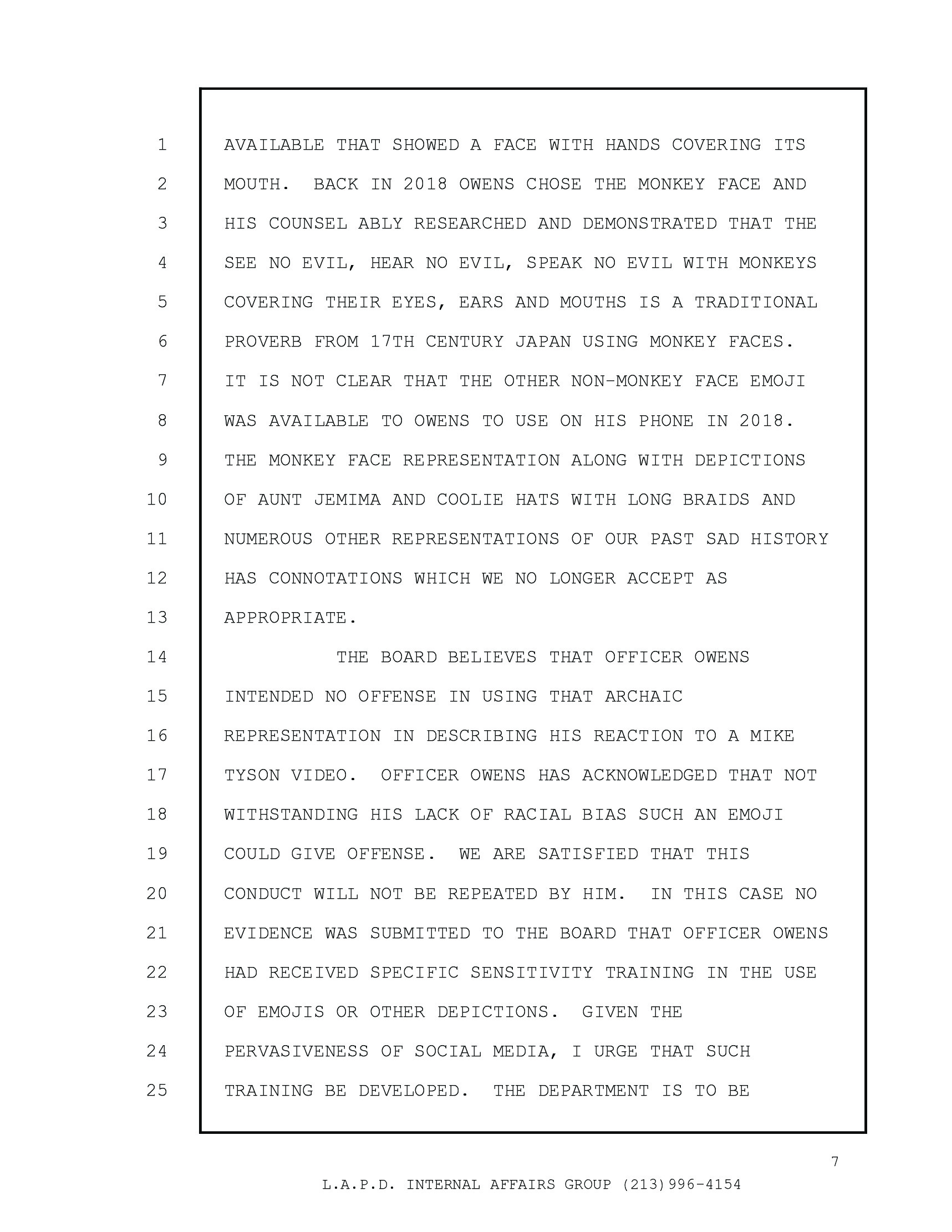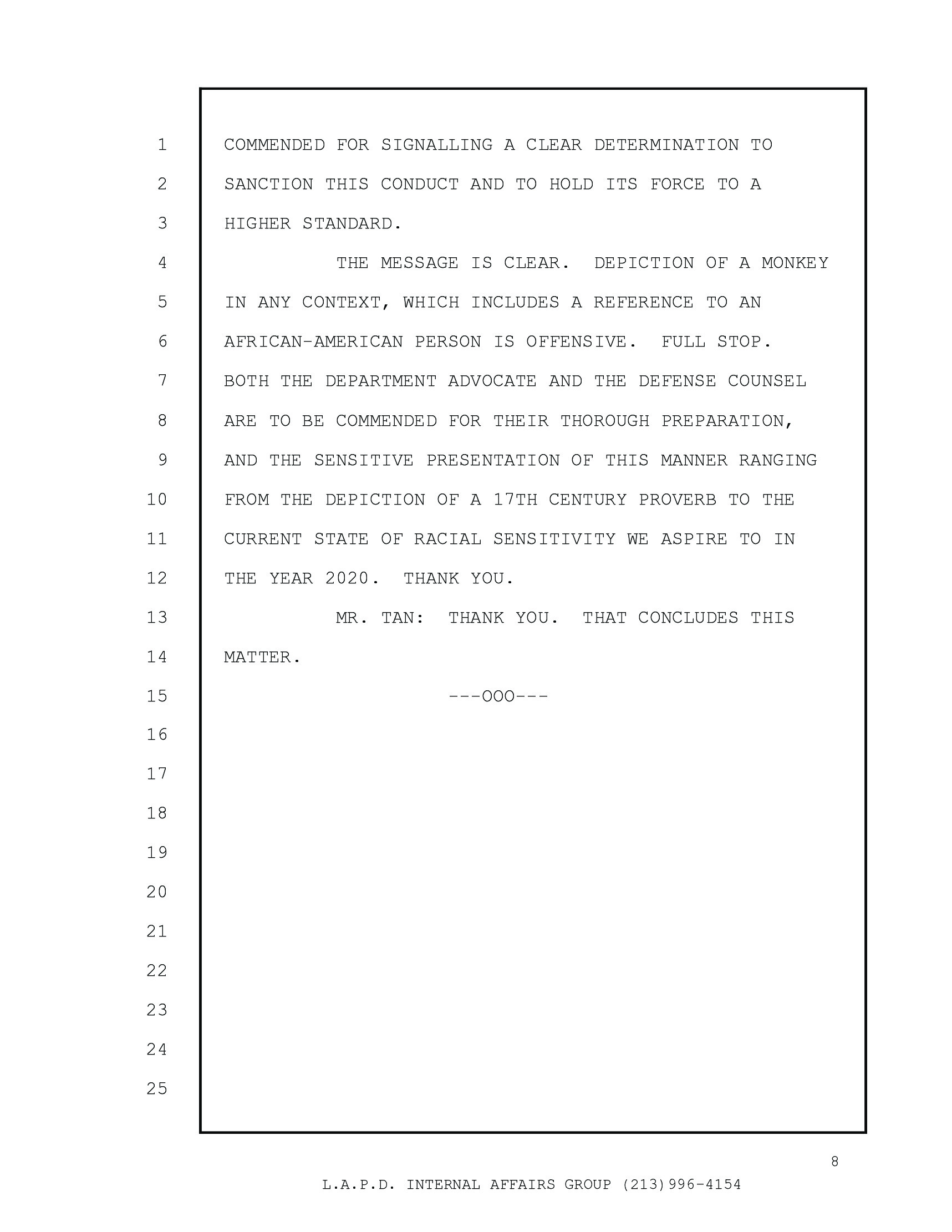Police discipline records are notoriously top secret in California. Since forever until 2019, when Senator Nancy Skinner‘s monumental SB1421 took effect, they were uniformly exempt from the California Public Records Act. Even now, though, only records relating to the most egregious misconduct can be released, and only when the officer is found guilty.1
But the huge majority of complained-against officers, at least in Los Angeles,2 are exonerated and most police misconduct isn’t covered by SB1421, which leaves most police disciplinary records completely off limits, and even the release of these very limited SB1421 records was and is highly contested. The
In 2019 police statewide fought SB1421 implementation in court, they fought to stop its retroactive application, and are still slow-walking and otherwise obstructing access to the newly available records.3 Releasing records of disciplinary procedures that end in exoneration isn’t even being discussed. But it certainly ought to be, not least because such secrecy really reinforces mistrust of the police.
The most obvious reason for police to be so vehemently against release is that proceedings ending in exoneration are empty performances with predetermined outcomes. If they’re not scripted, the thinking goes, then why not release the records? If privacy is the issue then why not release public versions, as LAPD does for use of force cases? As Peter Bibring of the ACLU says, “That lack of transparency prevents the public from having any faith that the process is working.”
What Bibring doesn’t say is that if the process isn’t working but the public still has faith in it, transparency is likely to destroy even that. Let’s find out! I recently obtained copies of confidential LAPD disciplinary records from a case where the subject was ultimately exonerated. Even though the offense was relatively minor, involving the officer’s use of a monkey emoji in a Facebook post about Mike Tyson, these records provide unprecedented insight into LAPD’s complaint handling procedures.
It started with a July 2018 complaint, called in to LAPD by a citizen, about the contents of Officer Nicholas Owens’s4 Facebook page.5 These two records reveal an unprecedented6 level of detail about LAPD disciplinary proceedings in much, much more ordinary cases than are covered by SB1421. I have never seen anything like them. Here they are:
✾ Penalty Recommendations — Nicholas Owens — BF29715 — This form records the findings of LAPD command staff. Ultimately Deputy Chief Horace Frank recommended Owens receive a ten day suspension.
✾ Board of Rights Rationale on Findings — Nicholas Owens — BF29715 — Most such recommendations are reviewable in a board of rights hearing, which presents its findings in narrative form. Here’s the board’s report on Owens, whom they completely exonerated.

The result of this part of the process is recorded in the LAPD Penalty Recommendation. This accords with the first stage in the LAPD disciplinary process, as described in this useful report to the Commissioners.8 So on December 31, 2018 Captain Richard Stabile found that “Employee Actions Did Not Amount to Misconduct.”9
Then Commander Edward Prokop weighed in on February 12, 2019 with the same conclusion. On April 10, 2019 Deputy Chief Horace Frank disagreed with his subordinates and recommended that Owens be suspended for 10 days. This is allowed under department procedures and for some incomprehensible reason is called a “military endorsement.”10 By the way, Frank seems to be wildly inconsistent with his penalty recommendations, if this other case is any indication.
And on May 16, 2019 Chief Michel Moore11 overruled everybody and recommended a five day suspension for Owens. Then the matter moved to a Board of Rights.12 The alleged offense was relatively small13 and yet the Board’s investigation, as reflected in their Rationale on Findings, appears to have been remarkably thorough (images of the report may be found at the end of this post as well).
The Board of Rights heard from witnesses, reviewed evidence, and deliberated on their verdict. It seems to have been an adversarial proceeding, with LAPD playing the prosecutor. Their final report includes a detailed account of the facts of the case as presented by each side, followed by a detailed explanation of the reasoning behind their verdict. It’s full of citations to the LAPD Board of Rights Manual14 to explain why they credited or discredited various pieces of evidence. It looks like a judge’s ruling. It looks procedurally perfect.
And I have no doubt that it is procedurally perfect. But procedures are meant to implement policies, and among the many superpowers of the police is the ability to follow procedure to the very letter while at the same time continuing to disregard and subvert policies.15 Here are the main points of the story as told to the Board by the investigator, Owens himself, and Tom Lang, retired LAPD officer and Owens’s father in law:
- [The] complaint stated “one of your employees is posting racist emojis of social media,” parenthesis, [sic] “Facebook,” close parenthesis. [sic] Nick Owens posted a video of Mike Tyson and used a monkey emoji in his description of him. “I’m going to the news outlets with this.”16
- Officer Owens further testified that he has received numerous trainings about interactions with the public and issues of race and gender.
- Officer Owens testified that his Facebook account is private and only his friends and family can see the content on the account.
- He could not explain how the complainant had accessed his Facebook account.
- Officer Owens reposted the [Mike Tyson] video on his Facebook feed using his Samsung phone.
- In the comment section below the video Owens posted three emojis.
- The emojis were stock emojis found on his cell phone.
- Two emojis were the laughing out loud emojis comprised of a face laughing with tears.
- The third emoji was a speak no evil emoji of a monkey face with the monkey’s right hand covering the monkey’s mouth.
- Owens stated that he used the speak no evil emoji to express the shock at the African-American interviewer’s question about Tyson’s rape conviction and Tyson’s expletive laden response.
- Officer Owens testified that he used the emojis only for that purpose.
- Tom Lang testified that he has known Officer Owens for 10 years.
- Owens is his son-in-law and is married to his daughter.
- [Lang] further stated that he is a retired L.A.P.D. detective, and he has spent considerable time with Officer Owens and has never heard a racist joke or act — or [sic] has he acted in a derogatory manner.
And after all that, the non-surprise ending: We find you not guilty. But that announcement is just the beginning of a multi-page description of the decision process. Here, finally, we can see what goes on inside these absolutely secret proceedings and begin to understand how it is that more than 90% of complaints end in exoneration. Here are the main points — with occasional commentary:
- The defense exhibit that explains the meaning of the speak no evil emoji, and the testimony of Officer Owens established that Officer Owens posting of the monkey emoji was an expression of shock at the content of the Tyson video.
- We received no evidence that the monkey emoji was a reference to Tyson’s race or ethnicity.
- Under the Board Rules 363.4 Complaint E-Mail Department 1 hearsay in standing alone cannot serve as a basis for a finding of guilt unless supported by direct evidence or an exception to the hearsay rule. In this case we have neither.
- Under the Board Rules — Board of Rights Manual 363.70 we cannot base our decision on inference or suspicion or conjecture.
- The Department asks us to infer that Owens’ use of the speak no evil emoji was an improper ethnic reference to the Tyson video.
- Department argues that this emoji is the same as other instances not before this board where the use of the monkey image was used in a manner intended to disparage African-Americans.
- While we are painfully aware of the cruel link of African-Americans to simians and that the slurs can often show on social media.
- We find the Department’s vigilance against racist and improper references to be a sound policy.
- Here the Board finds no evidence that Owens used speak no evil emoji as a pejorative linkage to African-Americans.
- Defense Exhibit A1-3 shows that the conventional meaning of speak no evil monkey is consistent with Owens’ testimony that he used the emoji to show his shock and awe.
- The speak no evil emoji image alone without something more would require us to establish a nexus to the person or persons in the video by reference or speculation under the rules governing the Board and fairness we cannot make.
- Based on the evidence in the record Department has not provided sufficient evidence to prove Count 1. We have a concurring opinion.
- Ms. Johnson: I would respectfully like to amplify the Board’s rationale by making this concurrent statement.
- Times have changed. Officer Owens used the emoji of two laughing faces rolling around to represent his reaction to a Mike Tyson interview on a video.
- The Department demonstrated as of the hearing date in 2020 there is also a face emoji available that showed a face with hands covering its mouth.
- Back in 2018 Owens chose the monkey face and his counsel ably researched and demonstrated that the see no evil, hear no evil, speak no evil with monkeys covering their eyes, ears and mouths is a traditional proverb from 17th Century Japan using monkey faces.
- It is not clear that the other non-monkey face emoji was available to Owens to use on his phone in 2018.
- The monkey face representation along with depictions of Aunt Jemima and coolie hats with long braids and numerous other representations of our past sad history has connotations which we no longer accept as appropriate.
- The Board believes that Officer Owens intended no offense in using that archaic representation in describing his reaction to a Mike Tyson video.
- Officer Owens has acknowledged that not withstanding [sic] his lack of racial bias such an emoji could give offense.
- We are satisfied that this conduct will not be repeated by him.
- In this case no evidence was submitted to the Board that Officer Owens had received specific sensitivity training in the use of emojis or other depictions.
- Given the pervasiveness of social media, I urge that such training be developed.
- The Department is to be commended for signalling a clear determination to sanction this conduct and to hold its force to a higher standard.
- The message is clear. Depiction of a monkey in any context, which includes an African-American person is offensive. Full stop.
- Both the Department advocate and the defense counsel are to be commended for their thorough preparation, and the sensitive presentation of this manner [sic] ranging from the depiction of a 17th century proverb to the current state of racial sensitivity we aspire to in the year 2020. Thank you.
I’m not a lawyer and hearsay is a complex topic but also what hearsay are they talking about? Maybe the complainant’s statement that the emoji was racist? And I don’t know what that “Complaint E-Mail Department 1” stuff means either.
This is the basis for my statement above that the Department seems to act as the prosecutor in board of rights hearings.
I am really curious about these other instances.
This document is apparently a transcript of someone reading out loud. There are two versions of this sentence in there and I can’t make either one grammatical.
Like I said above, the proceedings are meant to support policies.
The conventional meaning is consistent with shock and awe?! Not according to Emojipedia it isn’t. I don’t have a copy of this exhibit, but I sure would like to see it. I’m beginning to see why they might not want to release the exonerations, though.
A nexus is a connection. Owens put the emoji in a comment on the video. What does this board think it’s connected to? Concluding that an emoji in a comment on a video is connected to the subject of the video doesn’t require speculation. I have no idea what “by reference” means in this context. I wouldn’t be too surprised if it means nothing. I think probably even they know the argument is weak, otherwise why bring fairness into it if there’s actually a Board rule preventing them from drawing the conclusion?
From hearing officer Ms. Johnson.
It will become more clear which times have changed.

Probably this is the one they mean?
What does this have to do with what Owens intended the emoji to mean? The fact that his counsel had to research this 17th century nonsense strongly suggests that Owens himself wasn’t aware of the putatively exonerating proverb. Why would he be?
This is actually a fair point. In fact, the hand-over-mouth emoji was introduced in 2017 per Emojipedia. It was first available on Samsung phones on February 12 2018, also per Emojipedia. There’s no way to tell if Owens’s phone was up to date, though, so Ms. Johnson is correct that it’s not clear.17
This, on the other hand, is gibberish. What point is she making? The connotations are no longer appropriate so don’t apply to current uses of it? Now that everyone knows it’s racist they can use it without being racist? It’s really mysterious. And the other symbols she mentions aren’t available as emojis, so they’re really not parallel.
Now I’m really curious about what rule they’re exonerating this guy from violating. Does it really require an intention to offend? What’s the point of all this sensitivity training, then? To teach officers how to use racist symbols, to make racist remarks, with no consequences as long as they don’t intend offense? That can’t possibly be what the policy says, can it? The point, or the stated point, of the policy must be to make police more effective at whatever their job is supposed to be. If they go around offending people and then defending themselves with this “no offense intended” theory then, well, they’re not doing their publicly stated jobs well, are they?
This is the famous “I’m not racist so nothing I do is racist but I understand why you thought it was racist” theory.
OK, but who cares? If he didn’t violate the policy why shouldn’t he do it again? Why would Johnson say this if she really thinks he didn’t violate the policy?
This is the heart of Johnson’s argument. It’s like qualified immunity for racist remarks. If LAPD didn’t specifically train Owens in emoji-based racism then Owens isn’t responsible for his racist use of emojis. If I were exonerated of anything on these grounds, if I were relying on the exoneration to maintain my self-respect, or even just my job, I wouldn’t want it made public either. It’s ridiculously dumb in precisely the manner that police use to indicate that they are making shit up and they’re not even trying to hide the fact that they’re making shit up because there are no consequences for them. Except maybe in this case at least they understand that there might be consequences, or why take such pains to keep this stuff secret?
Does the fact that LAPD apparently doesn’t have a specific racial sensitivity training class mean that all officers can use this monkey face emoji indiscriminately until the training is developed and they’ve completed it?
Why is she commending the Department for trying to punish Owens when she just found that the guy didn’t violate the policy, what ever policy it is? If an effort to impose sanctions for the guy’s conduct is commendable then the conduct must be a violation, right?
Who didn’t know this in 2018? If the message is so clear why don’t they hold Owens accountable for ignoring it? The fact is that everyone knows this kind of expression is offensive. Again, I’m not surprised that police want to keep this kind of exoneration secret. It’s not convincing at all.
And that’s the end of the document, folks. More gibberish.
And that’s the story, but the end certainly suggests questions. If the Board of Rights found it necessary to use such unconvincing, convoluted logic to exonerate Owens over racist emoji use imagine what goes on in the hearings where someone is killed? Raped? Beaten? It’s not likely to be more convincing, is it? Less convoluted? Doubtful.
The procedures say to carry out certain steps in a certain order, and I’m that these Boards of Rights do that. It’s easy, so why wouldn’t they? But to have the steps lead to the intended goal, to make the process not just formally consistent with the requirements but consistent in actual practice, is not so easy if the goal is to find the truth. Or I guess it’s better to say that it would be easy to do that, to search for the truth, but the consequences of doing so, that the truth will come out in hard cases, aren’t necessarily so easy for LAPD to handle.
There are many good reasons why court proceedings are open to the public by default. That openness allows scrutiny, and the scrutiny insures the general validity of the process. As I said above, if LAPD is really handling complaints honestly there’s no reason at all to withhold any of these records, but especially not the exonerations. But given the statewide police flipout over SB1421 we’re not likely to see it soon.
- The police have a bunch of different terms for how these procedures can come out, none of which is “guilty.” And neither “not guilty” nor “innocent” are on the list. The differences in consequences can be startling. Board of rights hearings can end in findings of “not guilty,” but I haven’t seen that phrase used in official reports from LAPD. It might be, though. I didn’t look that hard.
- And why would it be different anywhere else?
- Last year Skinner introduced SB776, which would have considerably broadened the applicability of SB1421. It was passed by the Senate, amended and passed by the House, and then slipped away into the morass of disruptions created by the pandemic. But the legislature reconvenes on Monday, and Skinner plans to reintroduce the bill!
- Serial number 39659.
- LAPD officers seem to catch a lot of hell about their Facebook pages. As well they freaking should.
- In my experience.
- The caller seems to have left a fake name and according to the investigator the complainant couldn’t be located.
- The Department’s adjudication process begins with the accused employee’s commanding officer and goes through multiple levels of review. Upon completion of a complaint investigation, the employee’s commanding officer is responsible for reviewing the investigation, determining whether misconduct occurred, and recommending the disposition and penalty, if applicable. The commanding officer submits the investigation and recommendation up the chain-of-command to the bureau chief.
The bureau chief can concur with the recommendation, or if the bureau chief disagrees with the recommended adjudication, the bureau chief will prepare correspondence to IAG explaining the disagreement, the bureau’s recommended adjudication, and the rationale for the bureau recommendation. This is referred to as a Military Endorsement. With Biased Policing complaints, if IAG disagrees with the chain-of-command’s recommended adjudication, IAG forwards the complaint to the office director in the employee’s chain-of-command for a final disposition. While this is generally the Director of the Office of Operations, when an employee is assigned to Metropolitan Division, for example, the complaint would be forwarded to the Director, Office of Special Operations.
For complaints in which the recommended adjudication is to sustain any allegation with a penalty of an official reprimand or greater, there is an additional level of review. ith such complaints, IAG submits the completed investigation and recommendation to the Chief of Police for final adjudication.
- Weirdo capitalization in original.
- From the same Police Commission report cited above: “if the bureau chief disagrees with the recommended adjudication, the bureau chief will prepare correspondence to IAG explaining the disagreement, the bureau’s recommended adjudication, and the rationale for the bureau recommendation. This is referred to as a Military Endorsement.”
- The form is signed by a Lt. Chambers on Moore’s behalf. I’m assuming that Moore made the decision, or authorized someone to make it for him. But the story is already tangled enough without getting into that.
- Probably Owens asked for this, but maybe it was imposed on him. Both can happen, and I’m not sure which happened here, although it’s probably possible to deduce it from the LAPD Manual, which I haven’t done. I do know that the matter was heard by an entirely civilian board of rights, an option created by a 2019 amendment to the City Charter. I almost never state a fact without a record to back it, but I have to do so here. I have records that prove that the members of the Board were civilians, but I can’t publish them just yet. Soon, though, and they’re big!
- Not nothing, but also not killing unarmed people for no reason.
- This doesn’t seem to be online although I could be wrong. I have a request in to the Board of Police Commissoners for it. NOTE ADDED AT THE LAST MINUTE: I received (and published) a copy of the LAPD Board of Rights Manual just as I was finishing up this post. I don’t want to hold up publication for a rewrite, which would take a long time, because I think this info needs to get out. Meanwhile, take a look at the Manual if you’re interested.
- In some sense every successful member of a large organization has this skill, but the police have taken it to a level hitherto unseen in the world. It’s truly astonishing.
- I reproduced the punctuation as I found it and it makes no sense to me either.
- I have a Samsung phone right now, and Samsung updates it very regularly, so there’s that!


